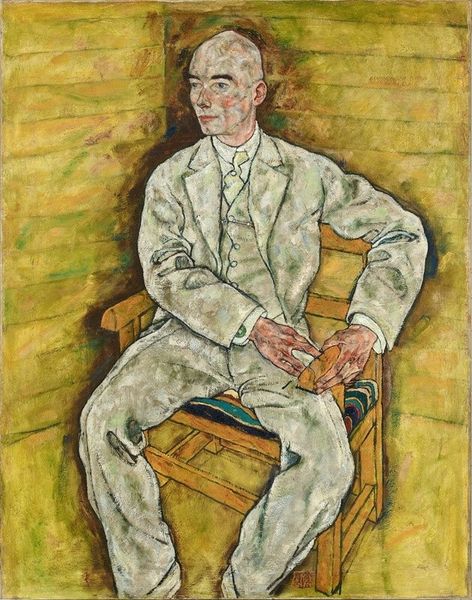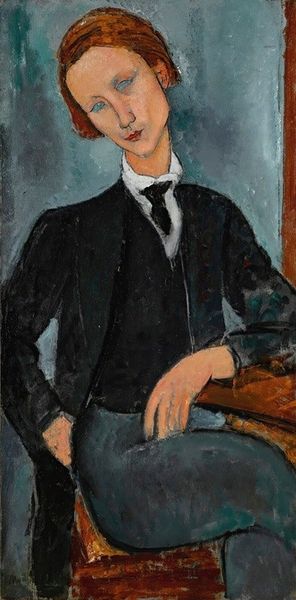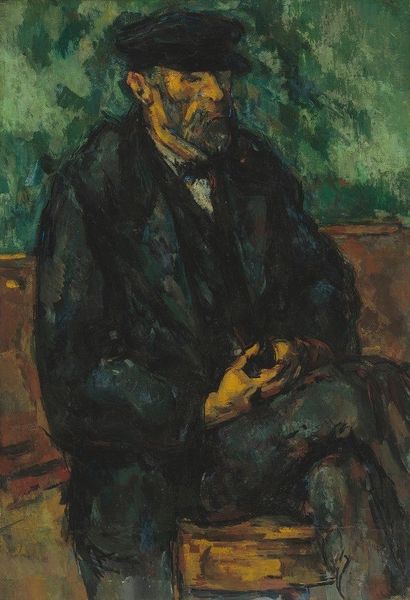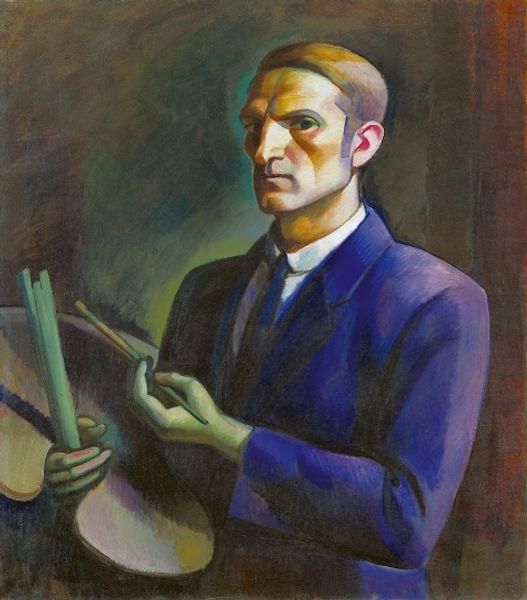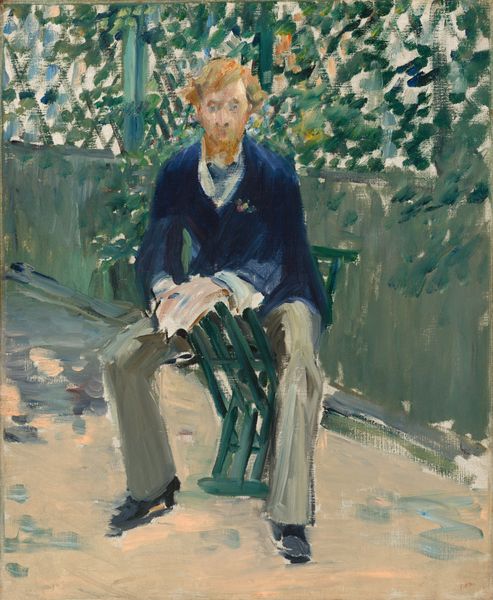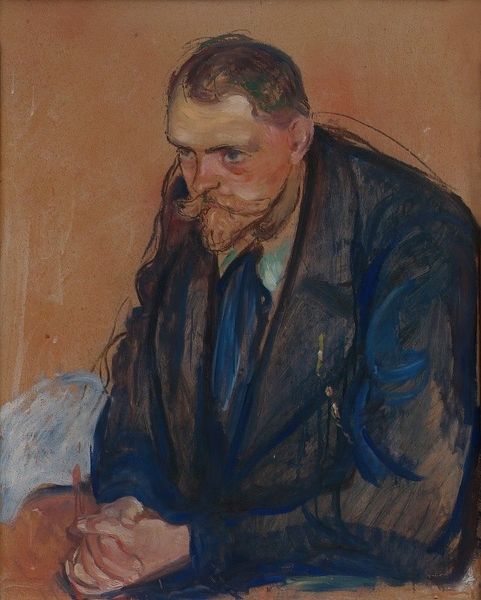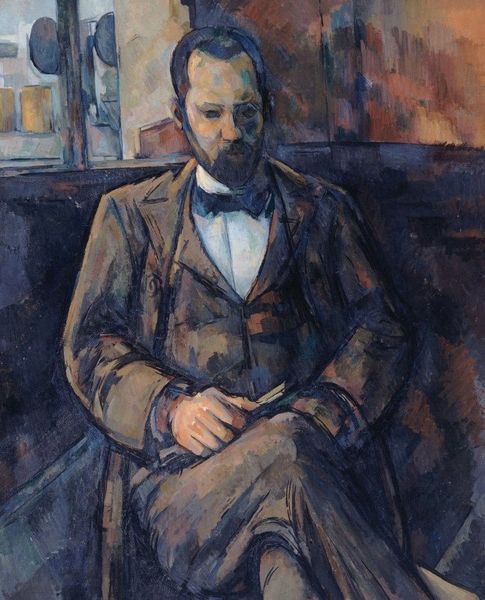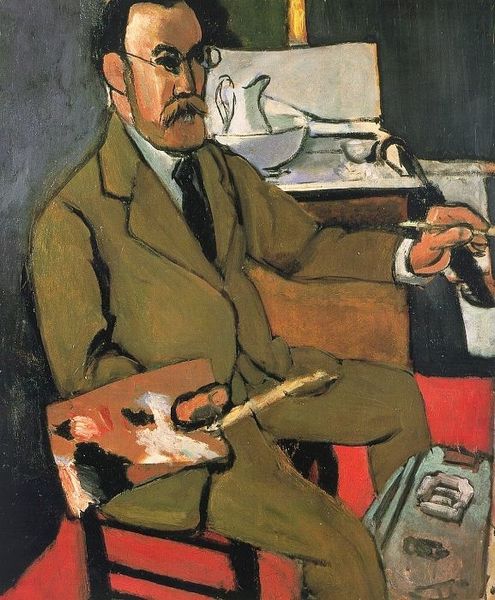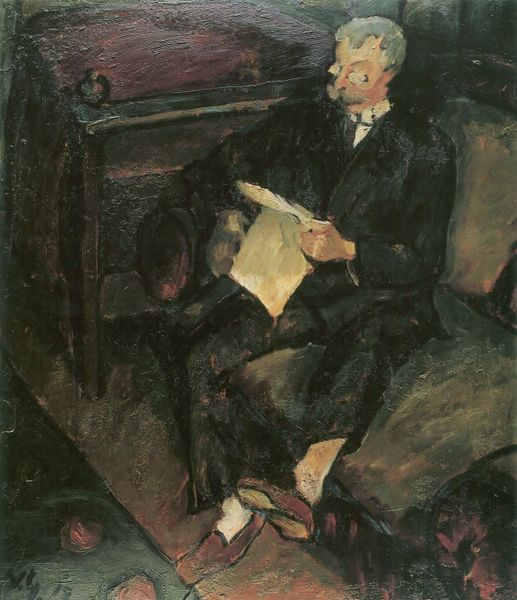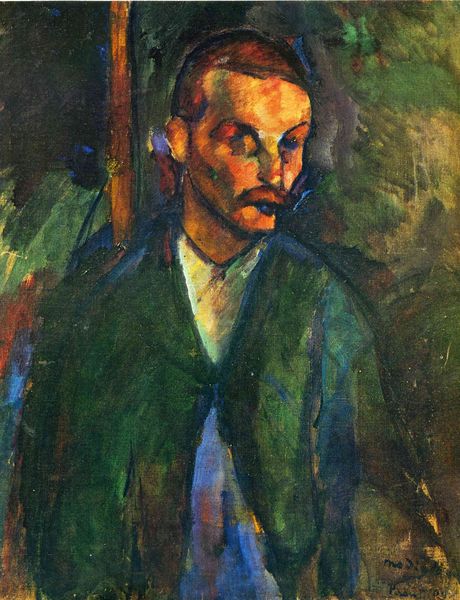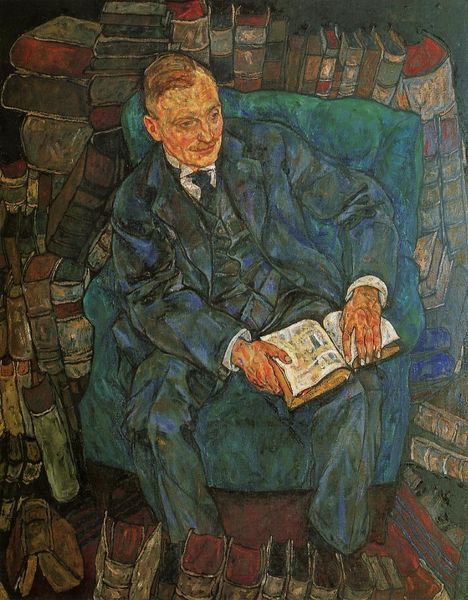
oil-paint
#
portrait
#
vienna-secession
#
oil-paint
#
oil painting
#
expressionism
#
portrait art
#
modernism
Copyright: Public Domain: Artvee
Curator: Here we have Egon Schiele’s 1917 painting, "Bildnis Dr. Franz Martin Haberditzl." Schiele painted this portrait of the prominent Viennese art historian towards the end of World War I. Editor: The portrait evokes a sense of weariness; the color palette, dominated by earthy browns and greens, along with the dark, undefined background, creates a somber mood. I also notice that Dr. Haberditzl isn’t making eye contact, it’s almost as if his eyes are drifting into the distance. Curator: Schiele and Haberditzl were both influential figures within Vienna’s vibrant artistic scene. This work emerged during a period of social and political upheaval that fostered a distinct style of art characterized by intense emotional expression and a departure from traditional artistic norms. Editor: That emotion is undoubtedly portrayed in the painting’s textures: the bold brushstrokes seem to capture both the likeness of Haberditzl but also an interior feeling. And I’m drawn to the detail of the floral painting he’s holding – an interesting visual contrast. Curator: Schiele was indeed interested in challenging artistic conventions. This canvas departs from traditional portraiture to explore deeper psychological and social dimensions. In that, this expressionistic representation reflects the artist’s distinctive style as he portrays the intellectual in a moment of contemplation during turbulent times. It's intriguing how the presence of the floral work within the painting complicates its message. Editor: I see that. The muted tones and that somewhat strained posture could easily convey melancholy, but it's like Schiele adds a subtle, hopeful element in the flower motif that makes you pause and rethink. Curator: Yes, and from an institutional point of view, one wonders about the nature of artist-patron relationships and the impact those can have on the creation and reception of artworks. In Schiele’s Vienna, there was great support for radical creative explorations, provided it catered to elite tastes. Editor: Looking at Schiele’s expressive brushwork alongside that formal pose gives me an almost disquieting sense. He manages to both honor and question the sitter. Curator: Indeed, it’s a layered work offering social and artistic insights into a crucial period. Editor: I find that formal ambivalence really powerful, the ability of the composition and style to hold conflicting perspectives about this one man, who likely thought quite differently about the function of art.
Comments
No comments
Be the first to comment and join the conversation on the ultimate creative platform.
